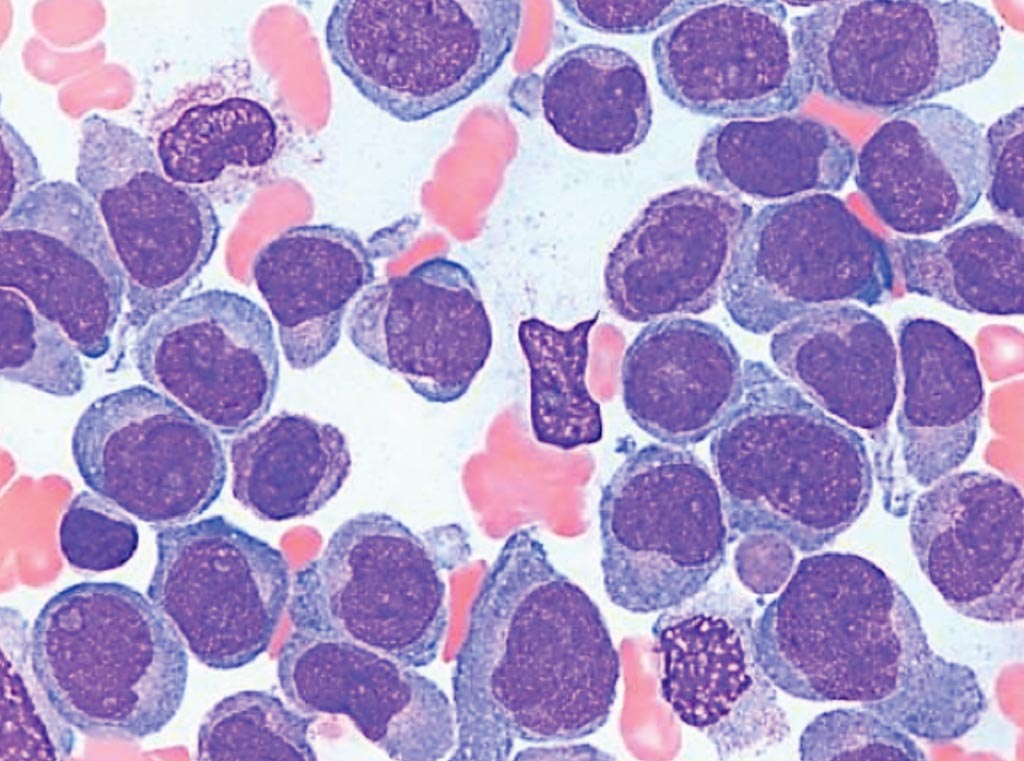Genetically Encoded Sensor Isolates Hidden Leukemic Stem Cells
By LabMedica International staff writers
Posted on 26 Mar 2019
All stem cells can multiply, proliferate and differentiate and because of these qualities, and leukemic stem cells are the most malignant of all leukemic cells. Understanding how leukemic stem cells are regulated has become an important area of cancer studies.Posted on 26 Mar 2019
Acute leukemia is an aggressive blood malignancy with low survival rates. A high expression of stem-like programs in leukemia predicts poor prognosis and is assumed to act in an aberrant fashion in the phenotypically heterogeneous leukemia stem cell (LSC) population.

Image: A photomicrograph of the bone marrow of a pediatric patient with acute myeloid leukemia (Photo courtesy of St. Jude Children\'s Research Hospital).
A team of scientists led by those at Tel Aviv University (Tel Aviv-Yafo, Israel) devised a novel biosensor that can isolate and target leukemic stem cells. Their unique genetically encoded sensor has the ability to identify isolate and characterize leukemic stem cells. The team searched genomic databases for "enhancers," the specific regulatory regions of the genome that are particularly active in stem cells. Then they harnessed genome engineering to develop a sensor composed of a stem cell active enhancer fused with a fluorescence gene that labels the cells in which the enhancer is active.
The investigators analysis revealed that the ERG + 85 enhancer region can serve as a marker for stemness-state and a fluorescent lentiviral reporter was developed that can accurately recapitulate the endogenous activity. They used a novel reporter and revealed cellular heterogeneity in several leukemia cell lines and patient-derived samples. Alterations in reporter activity were associated with transcriptomic and functional changes that were closely related to the hematopoietic stem cell (HSC) identity. Notably, the differentiation potential was skewed towards the erythro-megakaryocytic lineage. The scientists were also able to demonstrate that sensor-positive leukemia stem cells are sensitive to a known and inexpensive cancer drug called 4-HPR (fenretinide), providing a novel biomarker for patients who can potentially benefit from this drug.
Michael Milyavsky, PhD, a senior lecturer and senior author of the study, said, “Using this sensor, we can perform personalized medicine oriented to drug screens by barcoding a patient's own leukemia cells to find the best combination of drugs that will be able to target both leukemia in bulk as well as leukemia stem cells inside it. We're also interested in developing killer genes that will eradicate specific leukemia stem cells in which our sensor is active.” The study was published on January 31, 2019, in the journal Leukemia.
Related Links:
Tel Aviv University













